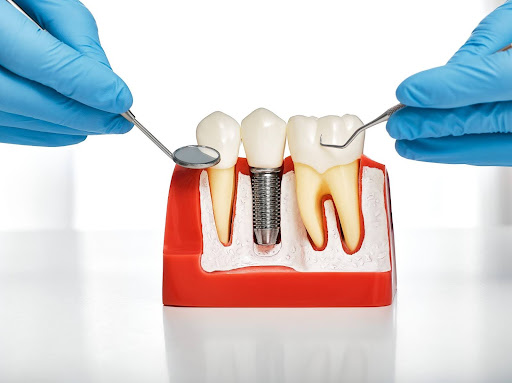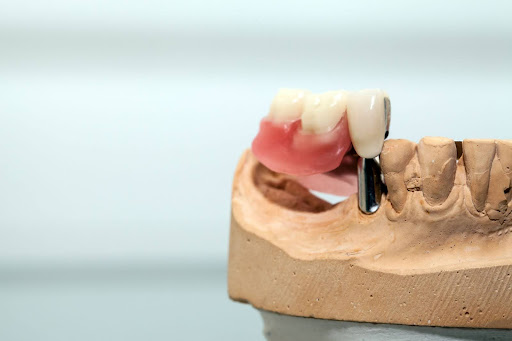
Understanding the Cost of Dental Implants
Dental implants replace missing teeth with a stable, natural-looking alternative. They restore appearance and function, making them a preferred choice for many adults. While they provide long-term value, the total cost can vary widely between patients. Understanding these differences helps you plan both financially and medically for treatment.
Main Factors Affecting the Cost of Dental Implants
The cost of dental implants depends on several medical and procedural elements. Each patient’s treatment plan is unique, so expenses differ based on the complexity of the work required. Implant type, chosen materials, and the need for preparatory procedures all play a role. Knowing these factors will help you understand why your quoted price might differ from another patient’s.
Type of Implant Procedure and Its Impact
Different implant procedures have various price ranges. A single-tooth implant typically costs less than a full-arch restoration because it involves fewer components and less surgical time. Multi-tooth implants require additional fixtures, increasing both time and material costs. Full-mouth reconstruction is the most complex, demanding more planning and a longer recovery. Each option should match your dental needs and long-term oral health goals. For example, a patient missing one tooth may not require the same approach as someone replacing an entire row.
Implant Materials and Longevity
Implant materials influence both the cost and expected lifespan. Titanium is the most common choice because it integrates well with bone and lasts decades. Zirconia offers a metal-free option with a more natural tooth-like color, but it comes at a higher price. Choosing between the two depends on budget, aesthetics, and medical considerations. While zirconia can be appealing for cosmetic reasons, titanium often provides greater long-term durability. Patients should weigh appearance preferences against maintenance and replacement costs.
Diagnostic and Planning Requirements
Pre-treatment diagnostics are essential for precise implant placement. Dentists tailor surgical plans using X-rays, CT scans, and digital impressions. These procedures add to the total cost but reduce the risk of complications. Accurate planning improves stability and shortens recovery time. Skipping these steps can compromise the success of the implant. For this reason, they should be considered an investment in treatment quality rather than an extra expense.
How Location and Expertise Impact Dental Implant Costs
The cost of dental implants can vary considerably, depending on where you receive care. Geographic location affects operating costs, and the provider’s skill level also plays a part. Urban clinics often have higher fees due to overhead, while rural areas may be more affordable but offer fewer specialists. Considering both factors helps you make a balanced choice between cost and quality.
Differences Between Urban and Rural Pricing
City-based dental practices typically charge more for implants because of higher rent, utilities, and staff salaries. Rural clinics can offer lower rates but may not have the same range of specialized equipment. Patients sometimes travel to nearby cities for complex procedures despite higher costs. Others choose rural providers for affordability and convenience. When weighing options, travel expenses and access to follow-up care should also be considered. Price alone should not be the deciding factor in selecting a treatment location.
Value of an Experienced Implant Dentist
Dentists with advanced implant training and a strong patient track record charge more. Their expertise can reduce complications and improve treatment longevity. Newer dentists may offer lower prices but could lack experience with complex cases. Selecting a skilled provider can mean fewer corrective procedures later. A dentist’s portfolio of successful cases is an important trust signal. In dental implant surgery, proven results are often worth the additional investment.

Additional Expenses Beyond Dental Implant Costs
The quoted price for an implant often excludes additional steps needed for success. Preparatory surgeries, temporary restorations , and aftercare appointments contribute to the total. Patients who plan for these costs from the start are better equipped to manage their budget. Missing these details can lead to unexpected bills during treatment.
Bone Grafting and Sinus Lift Procedures
Bone grafting restores lost jawbone density, making it strong enough to hold an implant. A sinus lift increases available space in the upper jaw for implant placement. These procedures can significantly raise costs and extend the healing timeline. However, they are necessary for stability and long-term success in patients with insufficient bone support. Skipping them can cause implants to fail prematurely. Dentists recommend these based on detailed imaging and clinical evaluation.
Temporary Tooth Solutions During Healing
Temporary crowns or bridges protect the implant area and maintain appearance while healing occurs. They usually allow patients to eat, speak, and smile during recovery. These restorations are removed once the permanent crown is ready. The cost depends on the material and complexity of the temporary device. Although short-term, they provide comfort and confidence throughout treatment. This step is often overlooked when budgeting for implants.
Ongoing Aftercare and Monitoring
Follow-up visits are necessary to monitor healing progress and adjust the implant as needed. These appointments might be bundled into the total fee or billed separately. Regular professional monitoring ensures the implant integrates well with the surrounding bone. Skipping check-ups risks unnoticed issues that can lead to failure. Maintenance costs, including cleanings, should be factored into the long-term budget. Preventive care protects your investment and oral health.
How Insurance and Financing Shape Dental Implant Costs
Financing dental implants often requires multiple strategies. Insurance rarely covers the entire cost, but partial benefits may apply to certain aspects of treatment. Flexible payment plans can spread the expense over several months or years. Understanding these options helps patients receive care without delaying treatment due to finances.
Limitations of Dental Insurance for Implants
Most insurance policies consider implants a non-essential procedure. As a result, they may only cover related services like extractions or crown placement. Some enhanced plans include partial implant coverage, but caps and exclusions still apply. Patients should request a detailed benefits breakdown before committing to treatment. Knowing your coverage prevents unwelcome surprises during billing and helps you decide whether additional financing will be necessary.
Available Financing and Credit Options
Dental offices often provide structured payment plans that divide costs into manageable monthly amounts. Third-party healthcare financing companies also extend credit lines for treatment. Interest rates and approval requirements vary, so comparing options is essential. Financing can help patients proceed with treatment without paying the full amount upfront. Careful review of repayment terms avoids long-term financial strain. Responsible planning makes implants more attainable for a broader range of patients.

Dental Implant Costs Compared to Other Tooth Options
Dental implants generally require a larger initial investment than alternatives. However, their durability often makes them more cost-effective over time. Bridges and dentures are lower-cost options, but they may need replacement sooner. Considering both immediate and lifetime costs can help patients make informed choices.
Dental Bridges and Long-Term Value
Bridges are anchored to adjacent teeth and typically cost less upfront than implants. However, they can weaken the supporting teeth over time, leading to additional restorative work and increasing lifetime costs. Bridges may also require replacement every decade. Implants avoid these issues by preserving surrounding teeth. The long-term value of implants can outweigh the initial difference in price.
Dentures and Maintenance Considerations
Dentures are one of the most affordable options at the start. They require periodic adjustments to maintain fit as the jawbone changes. Over time, these adjustments and replacements add up. Dentures may also limit biting force, affecting diet and comfort. Implants, in contrast, maintain stability without impacting jawbone structure. The performance difference often justifies the higher initial cost for many patients.
Planning Your Budget for Dental Implant Treatment
Financial planning is essential for a smooth treatment journey. Patients should assess all expected costs, including those beyond the surgery itself. Comparing multiple providers and understanding what is included in the price helps avoid unexpected expenses. A well-prepared budget keeps treatment goals realistic and achievable.
Benefits of Comparing Multiple Dental Quotes
Seeking quotes from different clinics highlights price and service variations. Some clinics include diagnostics and follow-up care, while others charge separately. Reviewing detailed breakdowns helps you understand what is truly included. The lowest quote may not always provide the best value. Comparing experiences, materials, and warranty policies supports informed decisions. This step helps you find the right balance between cost and care quality.
Prioritizing Quality Over Price Alone
Choosing treatment based solely on the lowest price can lead to complications. Poor-quality implants or inexperienced providers increase the risk of failure. Corrective procedures can cost more than choosing quality care from the start. Patients benefit from researching credentials, technology, and patient reviews. The most affordable path is not always the most reliable. Long-term satisfaction depends on the durability and success of the implant.
Plan Your Dental Implant Cost Strategy With Confidence
Missing teeth affect more than your smile; they impact daily comfort, nutrition, and self-assurance. Dental implants offer a lasting solution, and knowing the full scope of costs puts you in control of your choices. Aligning your budget with a trusted dental implant specialist ensures quality results and long-term satisfaction. The sooner you explore your options, the sooner you can enjoy the comfort, function, and confidence that come with a complete smile. Visit the Synergy Dental blog to learn more about treatments, pricing factors, and how to achieve the smile you’ve been waiting for.